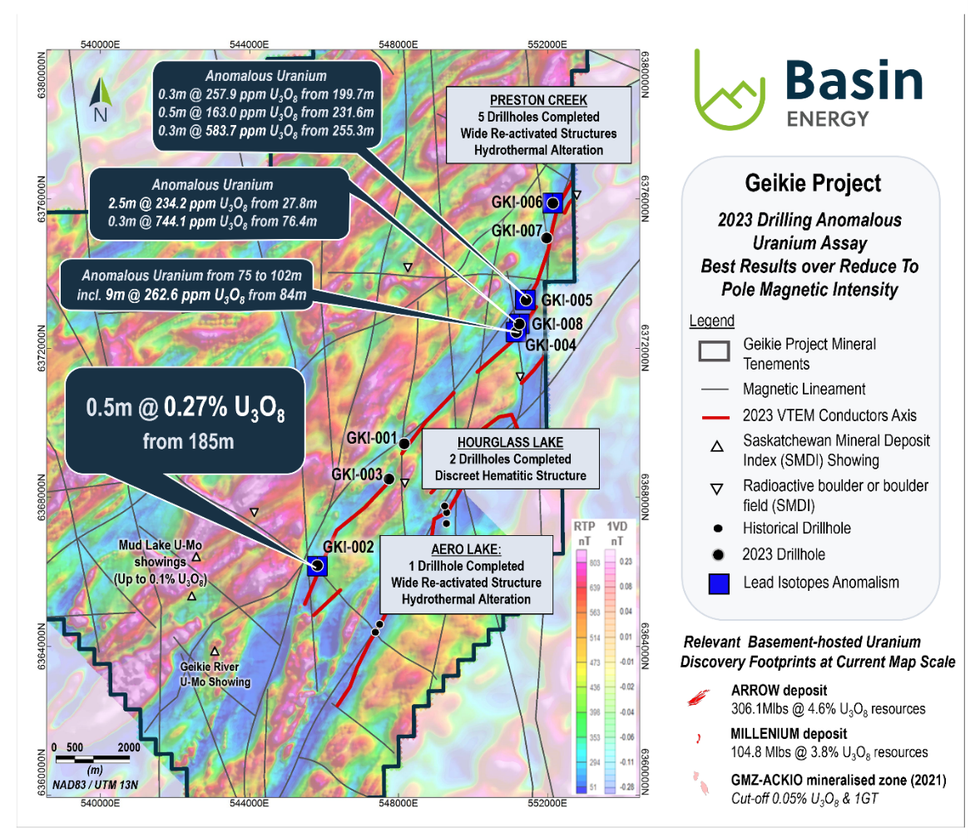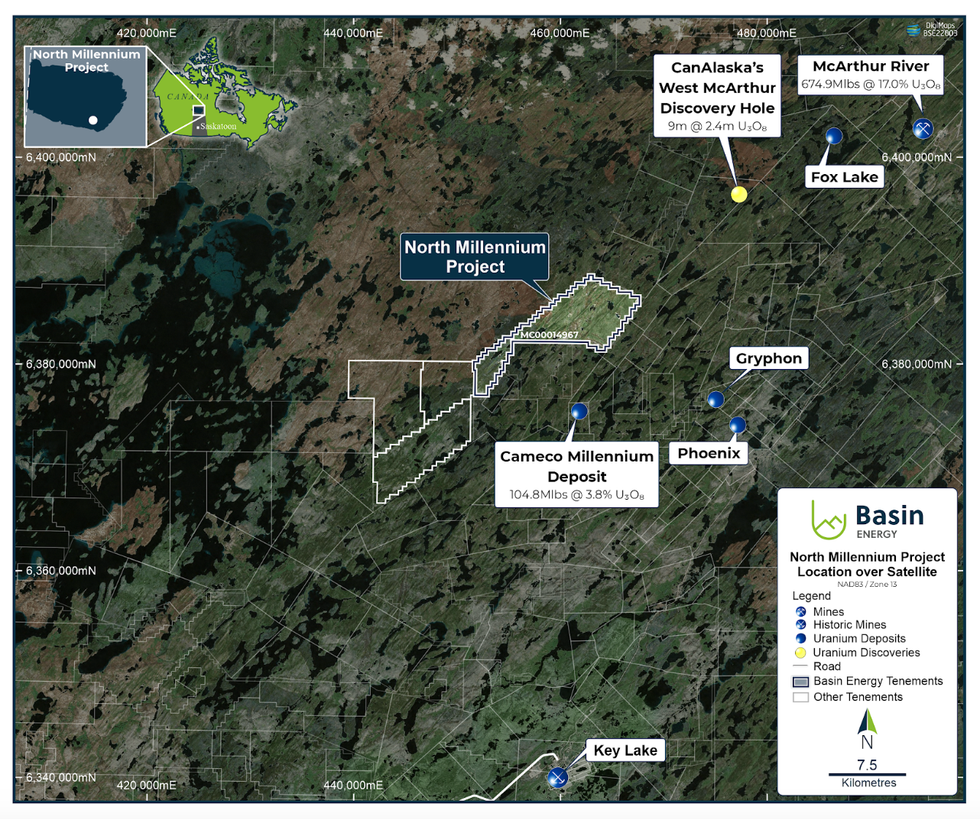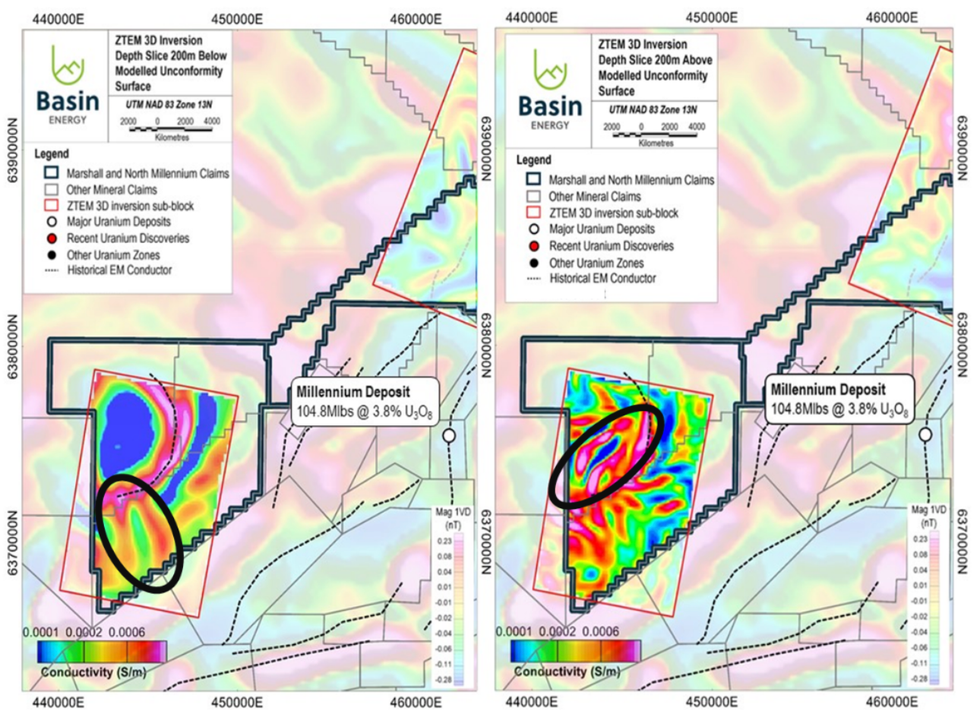Perth, Australia (ABN Newswire) -
Basin Energy Limited (
ASX:BSN) (OTCMKTS:BSNEF) is pleased to announce that it has entered into a binding agreement to acquire 100% of the issued capital of NeoDys Limited ("NeoDys"), a privately held critical minerals explorer with a dominant landholding in the Mount Isa region of northwest Queensland.
Key Highlights
- Binding agreement to acquire the largest prospective uranium and rare earth packages in Queensland, adjacent to Paladin Energy Limited's (ASX:PDN) Valhalla uranium deposit and Red Metal Limited's (ASX:RDM) Sybella rare earth discovery [1*]
- Early stage exploration supports three distinct, drill-ready exploration models, each amenable to low-cost shallow drilling:
o AEM geophysical survey previously reported identified extensive paleochannel network adjacent to the Sybella uranium "hot" granite.
o Significant hard rock granite rare earth element potential, analogous to Red Metal's Sybella discovery. Recent auger drill sampling returned numerous significant results including 5 m @ 1,951 ppm TREO with 578 ppm Nd+Pr oxide, incl. 3 m @ 705 ppm Nd+Pr oxide.
o District-scale sediment-hosted ionic clay rare earth potential with $150,000 Queensland Government funding in place to fastrack drilling. Soil sampling completed with numerous samped returning >600 ppm TREO with a maximum of 653 ppm TREO.
- Additional Valhalla-style uranium targets with multiple untested radiometric anomalies, in proximity to Valhalla, Skal and Odin deposits which host a combined 116 Mlbs U3O8 [2*]
- The Company has received firm commitments from institutional and sophisticated investors to raise $1.25 million at $0.025 per share, representing a 9% premium to 20 day VWAP.
- With the oversubscribed placement along with the Queensland grant,
Basin Energy is fully funded to test these drill-ready high priority targets, enabling the Company to fast-track multiple uranium and rare earth drill programs.
- Detailed targeting and drill planning is underway with exploration planned to commence in Q4 2025 to test shallow, high priority targets via aircore and reverse circulation drilling.
Managing Director, Pete Moorhouse commented:
"This acquisition propels Basin into Australia's uranium and rare earth exploration landscape. These projects deliver exceptional geology, strategic scale and compelling upside across two of the most critical mineral sectors of the energy transition. With drill-ready targets and a low-cost structure, this portfolio is primed to deliver value for shareholders. Over the next 6 months,
Basin Energy will be drilling the first holes on three district-scale opportunities for uranium and rare earth deposits in Northwest Queensland.
The Company is delighted with the strong interest in the capital raising. On behalf of the Board, I welcome our new shareholders, and thank existing shareholders for their continued support at an exciting time of development for the Company. We will be holding a webinar to walk through the projects on 28th August and encourage people to log in and learn more about this opportunity."
Overview
This acquisition provides Basin with a commanding position over one of Australia's emerging and underexplored provinces for uranium and rare earth elements ("REE"), leveraging the recent Sybella rare earth discovery by Red Metal Limited (ASX:RDM) and the prospectivity of the adjacent Barkly Tableland.
Basin now holds 5,958 km2 of exploration tenure in the Mount Isa district of northwest Queensland. The projects provide compelling walk-up drill targets that can be rapidly and cost-effectively tested using air core and reverse circulation (RC) drilling. NeoDys have an existing Queensland Government Collaborative Exploration Initiative funding agreement for $150,000, available for Basin to support upcoming drilling programs.
The drill-ready, district scale targets include:
- Paleochannel roll front uranium (1*)
- Sediment and ionic clay hosted rare earth elements (2*)
- Hard rock, granite hosted rare earth elements (3*)
In addition to these three district-scale targets, the project area contains multiple shear-hosted Valhallastyle uranium targets defined for immediate assessment.
The primary model is based on mineralisation sourced from the various granites of the Sybella Batholith ("the Sybella"), a large north-south trending igneous body containing zones enriched in rare earth elements. This includes the Red Metal (ASX:RDM) Sybella Discovery with a recent JORC inferred resource estimate of 4.795 Bt at 302 ppm NdPr, 28 ppm DyTb (200 ppm NdPr cut-off) or 209 Mt at 377 ppm NdPr, 34 ppm DyTb (360 ppm NdPr cut-off) [1*]. The Sybella granites are also uranium rich, potentially being the source of Paladin Energy's (ASX:PDN) Valhalla deposits[2*] .
Terms of the Share Placement
The Company has received firm commitments to raise $1.25 million, by way of a two-tranche share placement ("Placement") of 50 million shares at an issue price of $0.025 per share. The Placement price represents the Company's last market close price, and a 9.1% premium to the 20-day VWAP.
Tranche two will be subject to a general meeting, to be called shortly and expected in early October.
The offer was significantly oversubscribed, with proceeds to be allocated as follows:
- Air core drilling on the Barkly Tablelands uranium and REE targets
- RC drilling at the Newmans Bore granite-hosted REE target
- Mapping and sampling of the West Valhalla Radiometric targets
- General working capital.
The Placement was managed internally and was not subject to broker fees.
To view the full announcement, please visit:
https://abnnewswire.net/lnk/3833C16P
About Basin Energy Ltd:
Basin Energy Ltd (ASX:BSN) (OTCMKTS:BSNEF) is a green energy metals exploration and development company with an interest in three highly prospective projects positioned in the southeast corner and margins of the world-renowned Athabasca Basin in Canada and has recently acquired a significant portfolio of Green Energy Metals exploration assets located in Scandinavia.
Source:
Basin Energy Ltd













